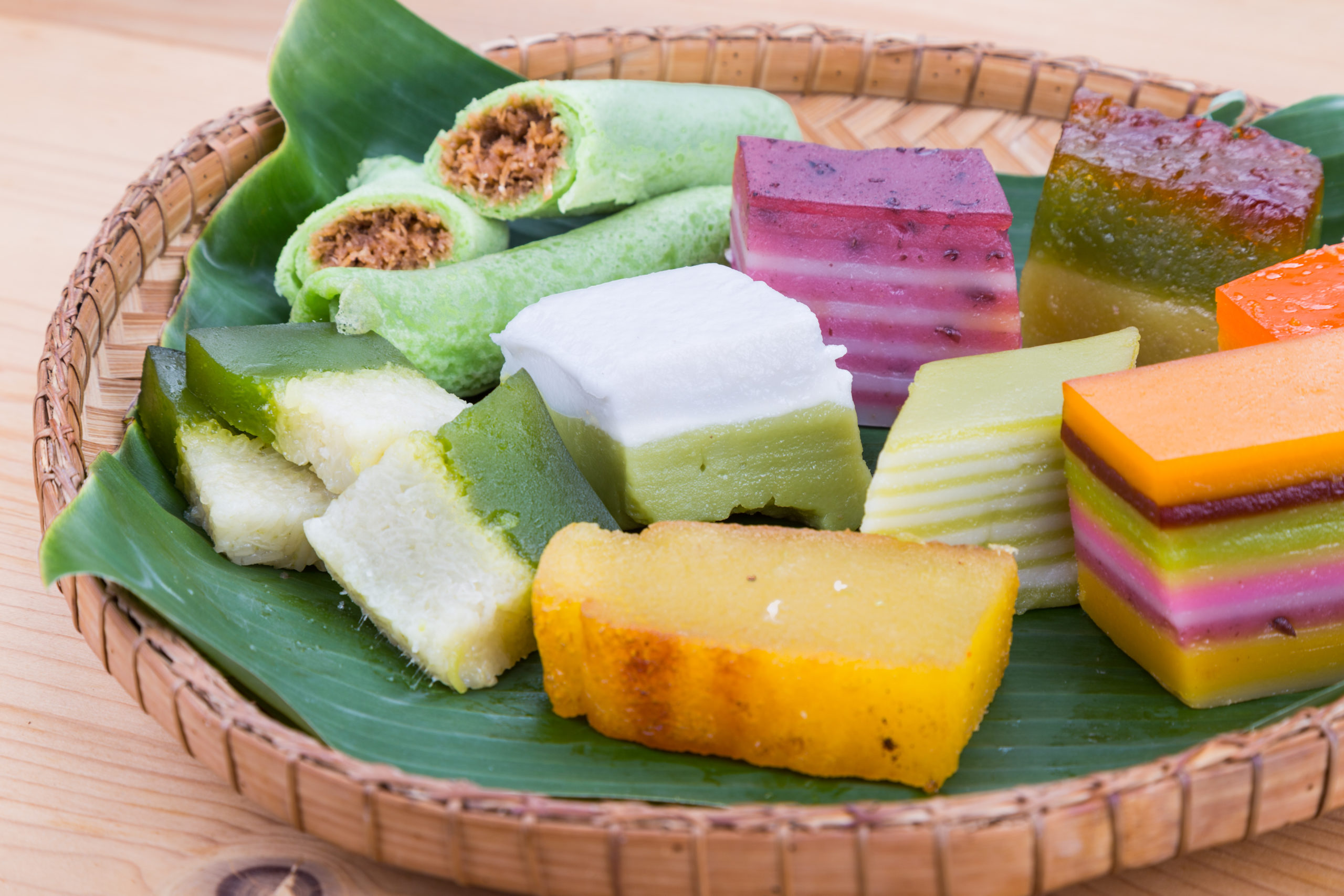Identifying your favourite Malay kuih
Ramadan is here again, and unlike last year, this fasting month will see the return of a treasured annual activity beloved by all Malaysians: food bazaars – the best place to soak up the merriment of Ramadhan and Hari Raya!
As Malaysians, we might each have our personal favourite kuih, but depending on which state you’re from and your own familial cultural background, you may not identify those kuihs by the same name.
With our MySejahtera apps handy, we are ready to brave a socially-distanced bazaar experience and trawl the bazaars in search of our favourite kuih!
Here’s a quick breakdown of what some of your favourite kuih are made of, as well as some alternate kuih names you may or may not have heard of.
1. Onde-onde
AKA Buah Melaka or Klepon
Also spelled ‘Ondeh-ondeh’

Any proper Malaysian would be able to recall at least once where they didn’t anticipate the squirt of gula melaka shooting out of an onde-onde they just took a bite of!
Believed to be of Indonesian origin, this kuih is essentially a pandan-infused ball made from rice flour (or sometimes potato flour), filled with molten palm sugar / gula melaka and coated in grated coconut.
2. Putu Piring
AKA Kuih Tutu
Similar to: Putu Bambu

One stall you will almost always see a queue in front of, is the putu piring stall at any Ramadhan bazaar. The fascinating process of watching putu piring steaming on their circular mounds right in front of your eyes is enough to get you in that buka puasa mood.
These sweet, soft discs are actually rice flour cakes that are filled with palm sugar, steamed, then served with coconut.
Putu piring is similar to its kuih-cousin the putu bambu, whereby a much larger portion of rice cake (also filled with gula melaka) is steamed inside a cylinder.
3. Kuih Bingka
AKA Tapioca cake, Kuih Cassava, and Bika Ambon (Indonesian name)

While there are regional versions of this cake found in Indonesia and Singapore, but there is a specific look and texture to the traditional Nyonya/Malay version of this kuih, the kind Malaysians know with a crispy top crust, chewy bite, and bright golden yellow colour.
What sets this kuih apart from a regular fluffy sponge or butter cake, is that its star ingredients are tapioca (derived from cassava root) and coconut milk (with some recipes suggesting an infusing of pandan leaf into the mixture).
4. Seri Muka
AKA Putri Salat or Kuih Salat
Also spelled ‘Sri Muka’

Credited to Malays and Banjarese (Indonesian ethnic group) as the creators of this kuih, this universally loved kuih is as pretty as it is delicious. Made up of glutinous rice (or pulut as we know it) for the bottom layer, the top layer is a custard made with pandan juice, which gives it that unmistakeable green colour.Both layers are also set with coconut milk, and the whole pan is steamed before it is cooled and cut into portions.
5. Apam Balik
AKA Terang Bulan, Martabak Manis
Other descriptions: Peanut Pancake, Peanut Turnover

Another kuih found all around southeast Asia, the true origins of this snack are traced back to Fujian, China. Besides the names it goes by in the Ramadhan bazaars, you are likely to also find more names for this kuih in the various Chinese dialects.
The batter to make apam balik consists of the usual basic ingredients you would use for any pancake; eggs, flour, sugar, and milk. But unlike the western method whereby pancakes are flipped to cook both sides, only one side of the apam balik touches the pan, as the upside receives the filling of chopped peanuts and creamed corn. The pancake is then folded in half upon itself, which gives it that crispy-on-the-outside and soft-and-fluffy-on-the-inside signature texture.
[Not to be confused with appam, which is an Indian fermented rice pancake served with coconut milk.]
This article got you salivating? Buka puasa with GemSpot and enjoy delivery at only RM1 during this festive month of Ramadan. For a limited time only, purchase items from our participating Halal and pork-free merchants, Raya gifting merchants and others, spending RM50 and get a FREE BOX of Dove 3-Ply Limited Edition Raya-inspired Masks.
